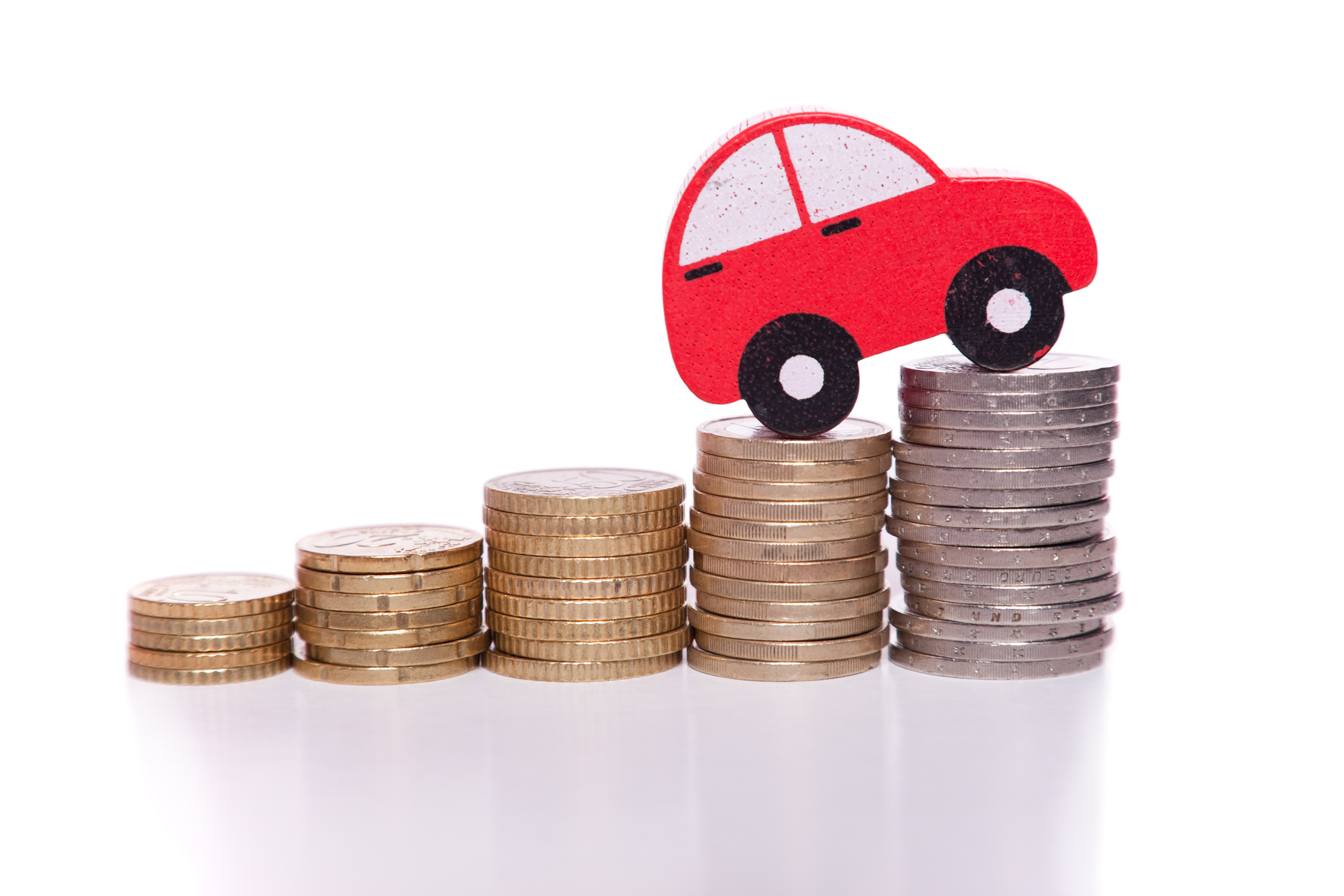Nine Ways Seniors Can Save on Car Insurance in 2025
Seniors tend to pay more for car insurance, but these discounts and strategies can help you keep rates down.

Erin Bendig
After incurring years of car insurance hikes, rates are moderating for 2025, with the average policy only increasing by 7%, according to Bankrate. However, with age being of the primary drivers of costs, how do you save on car insurance as you become older?
There are several reasons car insurance gets more expensive for older individuals — even those with a stellar driving record. According to Progressive, older drivers are more likely to be involved in accidents and more likely to sustain serious injuries as a result.
Even if you've never been in so much as a fender bender yourself, you'll probably still see your premium creep upward, simply because insurers see your age as a risk factor.
From just $107.88 $24.99 for Kiplinger Personal Finance
Become a smarter, better informed investor. Subscribe from just $107.88 $24.99, plus get up to 4 Special Issues

Sign up for Kiplinger’s Free Newsletters
Profit and prosper with the best of expert advice on investing, taxes, retirement, personal finance and more - straight to your e-mail.
Profit and prosper with the best of expert advice - straight to your e-mail.
One of the best ways I've found of keeping car insurance costs in line is by shopping with other companies a few weeks before your policy renews. Doing so can help you spot better deals.
Using this Bankrate tool, you can shop and compare car insurance options quickly:
Does car insurance go up as you get older?

At first, car insurance rates trend lower as you get older. But for seniors, the trend flips. Here's how a driver's age impacts car insurance rates over the course of their life:
- Age 25: Typically car insurance for teenagers is expensive, given that they don’t have much driving experience and are therefore more likely to get into a car accident. When drivers turn 25, their rates drop by 9% on average, according to Progressive.
- Ages 30 to 40: Car insurance rates typically remain lower throughout the 30s and 40s, as this age range is generally perceived as being responsible and experienced, and therefore less likely to have accidents.
- Ages 50 to 60: This age range is most likely to experience lower rates than other age brackets, as middle-aged drivers have extensive driving experience and aren’t as likely to be hearing or vision-impaired.
- Ages 70 to 80: Once drivers hit their mid-70s, car insurance rates typically go up, as this age bracket has an increased risk of being in an accident. Older individuals are also more prone to injuries if a car accident does occur, which can lead to costly medical expenses and other bills.
- 80s: Despite having the most driving experience, drivers in this age range are the most likely to have decreased reflexes and reaction times, which drives up their car insurance rates.
The following chart, per CarInsurance.com, shows annual average full coverage car insurance rates by age, illustrating just how much your rate can fluctuate depending on how old you are.
Age | Rate |
|---|---|
18 | $5,249 |
25 | $2,259 |
35 | $1,947 |
45 | $1,869 |
55 | $1,737 |
65 | $1,742 |
75 | $2,010 |
LiMu Emu & Doug™ are on a mission to customize your insurance so you only pay for what you need. It only takes minutes to see how much you could save.
*Based on Liberty Mutual Online Mystery Shopper Survey, December 2021
Nine ways seniors can save on car insurance

If you're not happy about the increasing cost of car insurance, the following tips can help you lower your premium.
1. Take a defensive driving course
Many states have mandated mature driver discounts for seniors if they complete state-approved driving courses. Organizations such as AARP, AAA and The National Safety Council (NSC) provide these classes.
Taking the AARP Smart Driver online course could qualify you for a multi-year discount on your car insurance policy, and successful completion of the AAA Driver Improvement Program, designed to reduce the risk of seniors behind the wheel, can also result in lower insurance premiums.
2. Keep a safe driving history
Many insurance companies reward drivers for having an accident-free driving history. Geico, for example, offers up to a 22% discount on most coverages if you’ve been accident-free for five years.
Keeping your driving record free of crashes, tickets, or any violations will help you qualify for lower rates.
3. Add or maintain vehicle safety features

You could qualify for further savings if your vehicle is up to par with safety equipment. This can include airbags, anti-lock brakes, anti-theft systems, and anti-collision technology.
State Farm offers auto insurance discounts on 1994 and newer-model-year private-passenger vehicles based on the loss experience of the make and model of the insured vehicle.
Here's how much certain safety features could save you with Geico, depending on your vehicle's equipment.
- Air Bag: 23%
- Anti-Lock Brakes: 5%
- Anti-Theft System: 23%
- Daytime Running Lights: 3%
- New Vehicle Discount: 15%
While it won't lower your insurance costs, having an emergency car kit on hand can help you fix smaller issues you might encounter on the road.
4. Try a multi-policy discount
If you open two policies with the same insurance provider, you’ll be able to save thanks to a multi-policy discount, which is offered by most insurance providers.
For example, if you bundle your auto and home insurance through Progressive, you'll earn discounts on both policies, with an average savings of 7% on your auto policy.
5. Pay your policy in full upfront
Sometimes, insurers will offer a discount to drivers who opt to pay their policy in full upfront, rather than making monthly payments.
If you make that payment using a cash back credit card, you can even give yourself an extra discount in the form of cash back rewards. Just make sure you pay off your credit card in full before you're charged interest.
6. Move to a state with cheaper car insurance rates
Planning to move in retirement? Keep in mind that car insurance rates vary widely from state to state, so check to see if you can afford rates for where you're moving.
That variation isn't enough to warrant uprooting your entire life if you weren't planning to already. But if you are considering a move, be sure to check out your options in one of the states with the cheapest car insurance rates. Alternatively, check the average rates in the state you're headed to so you know what to budget for when you get there.
7. Get multiple quotes before renewing

Before accepting the renewal quote from your current insurer, shop around to get at least three quotes from other insurers.
Rates can vary widely between insurance companies so you can end up saving hundreds on the exact same coverage just by switching car insurance. In 2024, drivers who switched insurance companies enjoyed median savings of $461 for the year.
8. Raise your deductible
Increasing your deductible also helps reduce how much you pay for insurance. If you're willing to risk paying more out-of-pocket in an accident, your premium will be lower.
Just be sure you can reasonably cover the deductible if an accident does occur.
9. Buy a car that costs less to insure
Your car's make and model can have just as much of an impact on your rates as your age does. Typically, models with high safety ratings and lower repair costs will cost less to insure.
Even if you don't think of your car as particularly expensive, the model could be driving up your premium as much as $1,000 higher than the national average.
So, next time you're in the market for a new car, consider choosing a Subaru or Honda as these makes are often cheaper to insure. At the very least, avoid Cadillacs, Teslas and other makes that usually rank among the most expensive cars to insure.
Related Content
Profit and prosper with the best of Kiplinger's advice on investing, taxes, retirement, personal finance and much more. Delivered daily. Enter your email in the box and click Sign Me Up.

Rachael Green is a personal finance eCommerce writer specializing in insurance, travel, and credit cards. Before joining Kiplinger in 2025, she wrote blogs and whitepapers for financial advisors and reported on everything from the latest business news and investing trends to the best shopping deals. Her bylines have appeared in Benzinga, CBS News, Travel + Leisure, Bustle, and numerous other publications. A former digital nomad, Rachael lived in Lund, Vienna, and New York before settling down in Atlanta. She’s eager to share her tips for finding the best travel deals and navigating the logistics of managing money while living abroad. When she’s not researching the latest insurance trends or sharing the best credit card reward hacks, Rachael can be found traveling or working in her garden.
- Erin BendigPersonal Finance Writer
-
 My Retirement Learning Curve, 1 Year In
My Retirement Learning Curve, 1 Year InA retiree checks in with what they wish they knew early on and what they've changed about their plan one year in.
-
 Introducing Your CD's Edgier Cousin: The Market-Linked CD
Introducing Your CD's Edgier Cousin: The Market-Linked CDTraditional CDs are a safe option for savers, but they don't always beat inflation. Should you try their counterparts, market-linked CDs, for better returns?
-
 'Humbug!' Say Consumers, Despite Hot GDP: Stock Market Today
'Humbug!' Say Consumers, Despite Hot GDP: Stock Market Today"The stock market is not the economy," they say, but both things are up. Yet one survey says people are still feeling down in the middle of this complex season.
-
 9 Types of Insurance You Probably Don't Need
9 Types of Insurance You Probably Don't NeedFinancial Planning If you're paying for these types of insurance, you may be wasting your money. Here's what you need to know.
-
 My Teen Crashed His Car, and Now Our Insurance Has Tripled. What Now?
My Teen Crashed His Car, and Now Our Insurance Has Tripled. What Now?Dealing with the costly aftermath of a teen car accident is stressful. Here are your options for navigating it.
-
 Your End of Year Insurance Coverage Review Checklist
Your End of Year Insurance Coverage Review ChecklistStop paying for insurance you don't need and close coverage gaps you didn't know about with this year-end insurance review.
-
 Snowbirds: Avoid These 3 Sneaky Insurance Issues
Snowbirds: Avoid These 3 Sneaky Insurance IssuesBefore snowbirds depart for their winter retreat, they should check their insurance coverage for surprises that might arise, or else be on the hook for repairs.
-
 10 Things You Should Know About Buying a Car Today, Even if You've Bought Before
10 Things You Should Know About Buying a Car Today, Even if You've Bought BeforeIf buying a car is on your to-do list, and it's been a while since you went shopping for a new one, this guide will help avoid any nasty shocks in the showroom.
-
 Loyalty Doesn’t Pay: Why Your Car Insurance Keeps Going Up
Loyalty Doesn’t Pay: Why Your Car Insurance Keeps Going UpYou’ve been a good customer, now your premium is creeping up. Here’s why loyalty might be costing you on car insurance.
-
 Protect Your Family From Costly Festive Fails With These Holiday Tips
Protect Your Family From Costly Festive Fails With These Holiday TipsHaving people over this holiday season? Before opening the door to guests, here are some perils to prepare for in advance.
-
 When an Extended Car Warranty is Worth It — and When it's Not
When an Extended Car Warranty is Worth It — and When it's NotGot the "we're trying to reach you about your car's extended warranty" call? Here's what you need to know before buying.
